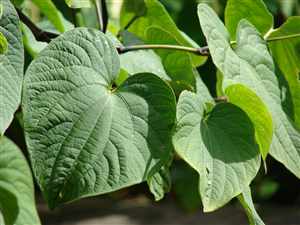Kava-kava (Piper methysticum)
Main Facts about Kava-kava

Using Kava-kava
Kava is sedating and is primarily consumed to relax without disrupting mental clarity. Roots have also been used for urinary tract infections (UTIs), pain and swelling of the uterus, venereal disease, menstrual discomfort, and to arouse sexual desire. Kava is used to help wound healing for skin diseases including leprosy, and as a painkiller. It is also used as a mouthwash for canker sores and toothaches.Kava-kava is a remedy for: Anxiety
Caution!
Don’t take long term, possibly bad for liver. Do not take if pregnant, lactating, taking alcohol, medication or suffering from depression.Cooking with Kava-kava
Traditionally, it is prepared by either chewing, grinding or pounding the roots of the kava plant. Chewing fresh kava root has the strongest effect (may numb mouth). The ground root/bark is combined with only a little water, as the fresh root releases moisture during grinding. Fresh, undried kava produces a stronger beverage than dry kava. The strength also depends on the species and techniques of cultivation.How to grow Kava-kava
The kava shrub thrives in loose, well-drained soils where plenty of air reaches the roots. It grows naturally where rainfall is plentiful. Too much sunlight is harmful, especially in early growth. It is propagated by stem cuttings.| Kañiwa |
Kelp
|